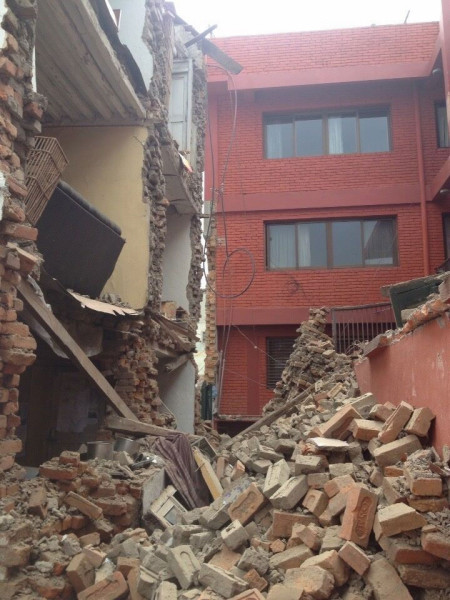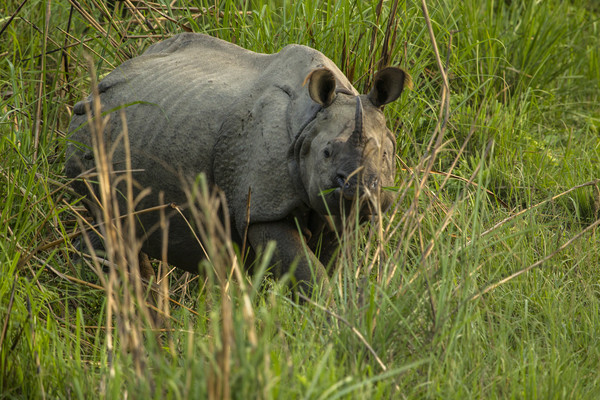Nepal earthquake hits close to home
WWF is deeply saddened by the tragedy unfolding in Nepal. Our thoughts and support go out to those impacted by this disaster and their families, including the WWF staff and partners working in the country and surrounding regions impacted by the earthquake. Toronto-based WWF Conservation Scientist, Rinjan Shrestha, speaks about the continuing recovery in Nepal, as well as shares some welcome news from our colleagues in that country.
A massive earthquake measuring about 7.8 Richter scale hit Nepal on Saturday, April 25th. The epicenter was located close to the capital city Kathmandu, which is one of the most densely populated areas of Nepal. Where neat stone and mud houses once stood, there are now just piles of rubble. To make matters worse, a series of aftershocks that lasted for more than a week has forced millions of people out of their homes. The entire city is living outdoors, under canvas, corrugated metal sheets, or just the shade of a tree.

© Swechya Mathema
I was born and raised in Kathmandu and moved to Toronto six years ago with my wife and daughter. I am currently working as a conservation scientist for the Eastern Himalayas Programme of the WWF-US based here in WWF-Canada. My role has been to provide technical support in implementing Asian Big Cats research and conservation initiatives including snow leopards and Bengal tigers. These projects are being funded by both WWF-US and WWF-Canada. I work very closely with the staff at WWF-Nepal on these conservation efforts, and I’m happy and thankful to report that all of my colleagues are safe.
Thankfully, my family and friends were not harmed in the earthquake, but because of aftershocks they had to live outdoors in a community courtyard for a few days. Heavy rainfall has added hardship for people forced to sleep in rough conditions, after the earthquake destroyed their homes. But the sufferings of my family and friends are nothing compared to so many other people who have lost their loved ones and livelihoods. Official death toll has now been reached close to 8000 and is expected to cross over 10,000. There are reports that some of the remote mountain villages have been completely wiped out and it might take days for the search and rescue team to reach these villages because of the inclement weather conditions and dilapidated roads. There is a crucial shortage of drinking water, food and power.
While recovery efforts have begun, aid is needed in Nepal. I encourage you to support the international aid efforts – more details can be found here.
WWF has supported conservation work in Nepal since the 1960s. Today, more than 100 staff operate throughout the country, working with local communities to protect the country’s incredible natural resources and wildlife. Amid the heart-breaking human tragedy of this earthquake, my colleagues in Nepal have done their best to continue their work and have recently shared a bit of welcome conservation news – that rhino populations in the country are increasing.
Reported last week, but counted in early April 2015, we have learned that Nepal’s rhino population has increased by 21 per cent. There are now 645 rhinos in Nepal’s Terai Arc Landscape, compared to 534 in 2011.

This announcement follows other species successes from Nepal, thanks to the achievement of zero poaching of rhinos, tigers and elephants, and increasing efforts to work with communities to protect these species and their habitats.
My colleagues will have much work to do over the following months – rebuilding their homes and communities. But this achievement gives me great hope for the recovery that will come.
Along with WWF’s offices throughout Asia and beyond, we are committed to supporting the people of Nepal and our staff and their families as they recover from this earthquake.
We encourage you to support the recovery efforts in Nepal – here are more details on where you can donate.

